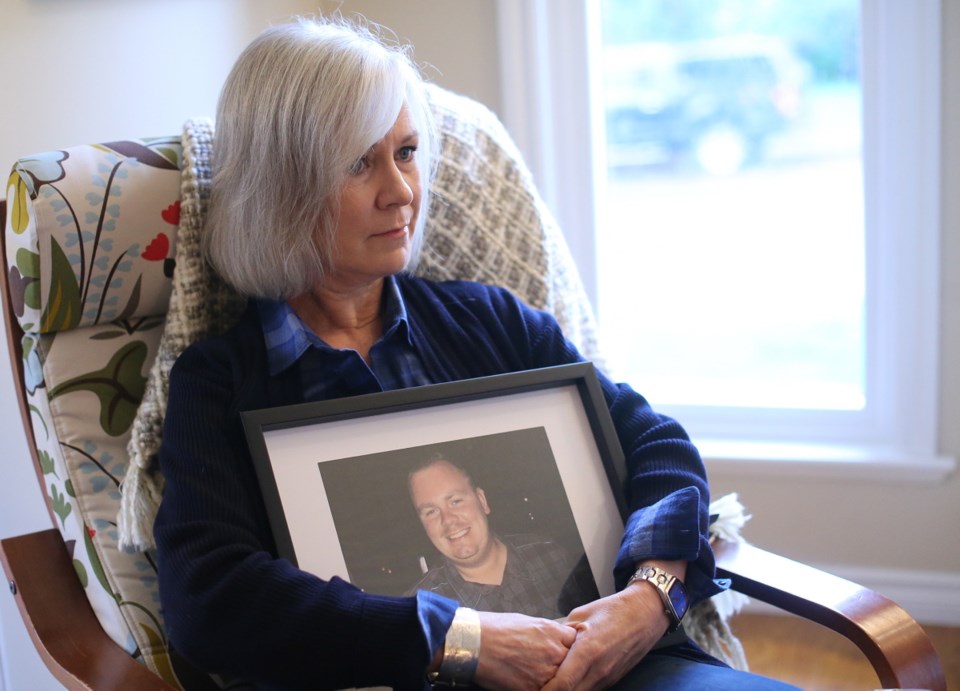Robert Cunningham hid his addiction from his mother. It wasn’t until the 24-year-old died of an overdose that Jennifer Howard truly understood the lethal grip of the fentanyl epidemic.
“For me, it wasn’t only the shock of losing him from fentanyl — it was also the knowledge of how far deep he was into that drug world,” Howard said.
“As a parent, you have some shame around that, all tied in with the stigma involved in an overdose death and addiction.”
Cunningham died in his Shawnigan Lake apartment on May 21 at 2 a.m. The coroner later told Howard that he died from a lethal dose of pure fentanyl.
“I still have trouble wrapping my head around that,” she said. “I can’t believe that he would have knowingly taken fentanyl straight.”
Fentanyl is an opioid drug that is 50 to 100 times more potent than heroin. Howard later found out from Cunningham’s friends that he had been injecting heroin for seven months. Because fentanyl is inexpensive, it is commonly cut into other illicit drugs, meaning drug users often have no idea they are consuming it.
“If your body doesn’t have a tolerance level, it can take such a small dose to kill you,” she said.
Howard hopes that a B.C. Coroners Service public inquest into the death of Brandon Juhani Jansen will lead to better harm-reduction measures, such as the opening of supervised consumption sites.
“Here I am as a mom, I’ve got one small voice,” Howard said. Someone in a more prominent position, such as the coroner, “can help be a voice of the community … and see that change is happening.”
Jansen, a 20-year-old resident of Coquitlam, died after consuming drugs in a substance-abuse treatment centre in Powell River in March.
During the inquest, the first into a fentanyl-related death in B.C., the presiding coroner and a five-person jury will hear from a variety of witnesses with direct and expert knowledge in order to provide recommendations.
“By investigating these deaths or having inquests into these deaths, it not only helps determine the circumstances of these deaths, but it’s a tool to help prevent them in the future,” Howard said.
If coroners services across Canada took a similar proactive approach, she said, it could put pressure on the federal government to relax regulations for supervised injection sites and open the doors for more harm-reduction services.
After the death of her son, Howard joined an advocacy group called Moms Stop the Harm, which is pushing for more harm-reduction measures and easier access to treatment beds.
Howard also believes more extensive training in the use of naloxone, which reverses the effects of opioid overdose, could save lives.
“I just don’t want another family to experience what I’ve gone through,” she said. “There has to be something I can do as a mom to advocate for change.”
Many people resort to stereotypes and assume most drug users are living on the streets, Howard said. Cunningham was living on his own and was “semi-functioning” while gripped by his addiction.
She wants to remember her son as the friendly, popular animal lover he was before teenage rebellion years morphed into harmful drug abuse. As a teen, he loved drumming, playing lacrosse and soccer and was always surrounded by friends, Howard said.
“The tragedy of his death is you can get wrapped up in that and lose sight of who the person is underneath the addiction,” she said.
“That’s true for the general community that has difficulty having these conversations about addiction and being open about it, seeing it … as a health need that’s equal to any other health need.”



